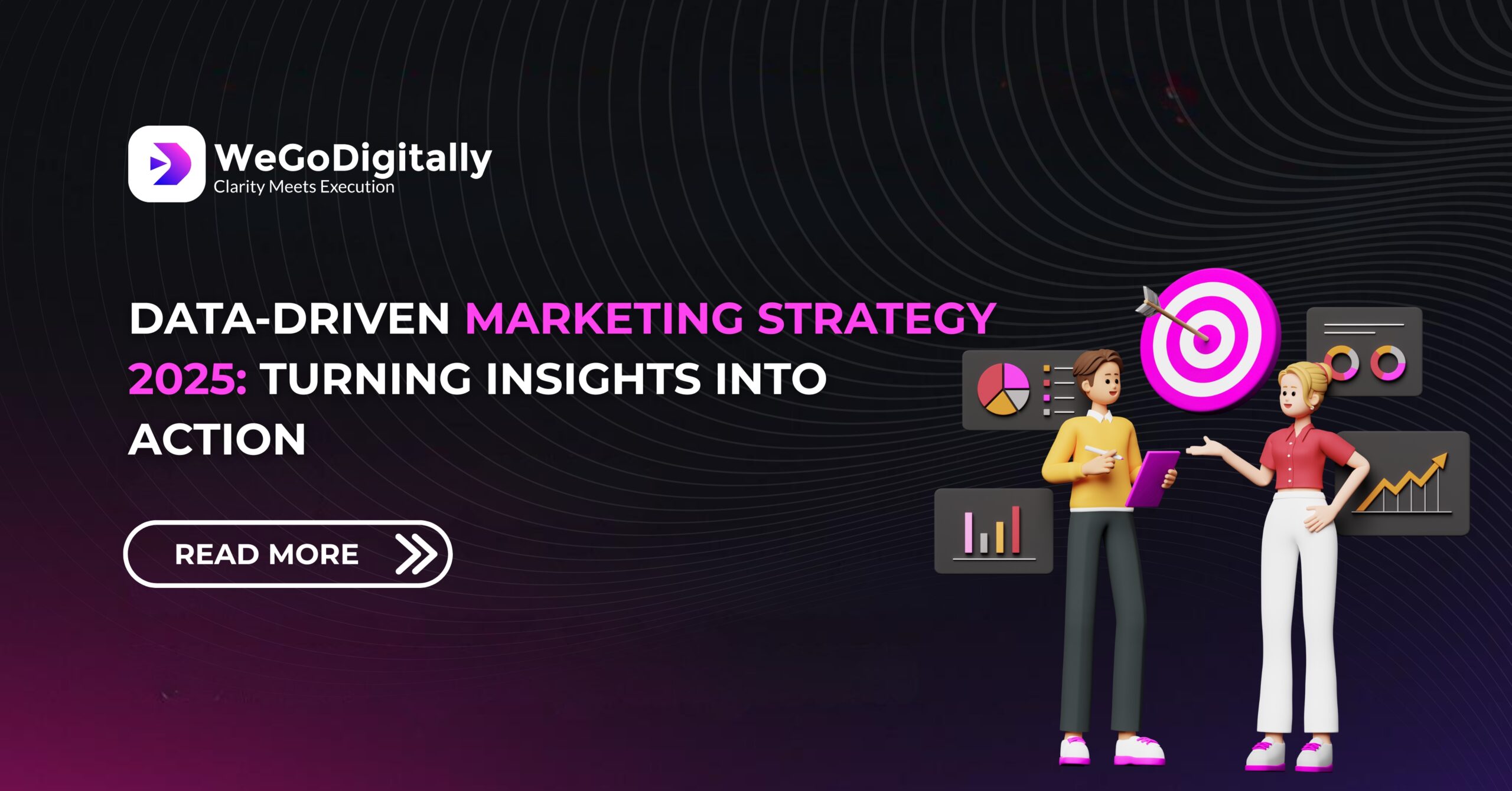Why smart data is the new foundation of growth-focused marketing
In 2025, digital success isn’t determined by how much data you collect — but by how intelligently you use it.
From audience insights to creative testing, every marketing decision now depends on analytics that convert information into impact.
This is your step-by-step guide to building a data-driven marketing strategy powered by GEO (Generative Experience Optimization), AIO (AI Optimization), and AEO (Answer Engine Optimization).
1. Data Is the Core of Every Marketing Decision
Modern marketing starts with data, not guesswork.
Whether it’s campaign performance, website behaviour, or purchase intent — every number tells a story.
2025 snapshot:
-
91 % of top-performing companies use data-driven decision-making across departments.
-
Businesses tracking multi-channel data grow 25 % faster year-on-year.
-
Predictive dashboards replace static reports.
GEO Insight: Visualize your data through real-time dashboards that adapt to user behaviour.
AEO Tip: Answer “What is data-driven marketing?” clearly within your article.
AIO Layer: Automate data integration between ad platforms, CRM, and analytics.
2. Collect the Right Data — Not All Data
Marketers once believed more data equals better marketing. 2025 proves the opposite.
Focus on first-party and zero-party data that users willingly share — these drive authentic personalization.
Smart collection includes:
-
CRM and email analytics
-
On-site behaviour heatmaps
-
Post-purchase feedback forms
-
Social listening tools
GEO Insight: Make your data collection journey transparent and rewarding for the user.
AEO Tip: Add Q&A snippets like “What is first-party data in marketing?”.
AIO Layer: Deploy AI filters to remove redundant or duplicate entries automatically.
3. Use AI to Turn Data Into Decisions
AI has transformed raw analytics into actionable insights.
From predictive audience segmentation to automated ad optimization, AI translates data into strategy.
Practical outcomes:
-
Google Ads + Meta Advantage + campaigns predict winning creatives automatically.
-
AI CRM tools recommend next-best actions per user.
-
Dynamic email subject lines increase open rates by 40 %.
GEO Insight: Personalize journeys using AI insights, not assumptions.
AEO Tip: Include a structured answer for “How is AI used in data analytics?”.
AIO Layer: Use machine-learning feedback loops to refine campaigns daily.
4. Measure What Truly Matters
Metrics have evolved beyond clicks and impressions.
In 2025, CLV (Customer Lifetime Value), CAC (Customer Acquisition Cost), and ROI define success.
Shift in mindset:
-
Replace vanity metrics with actionable KPIs.
-
Use attribution models to understand each channel’s role.
-
Track engagement depth, not just reach.
GEO Insight: Display metrics through intuitive visuals that tell a story.
AEO Tip: Create a quick FAQ like “Which KPIs matter most in digital marketing 2025?”.
AIO Layer: Automate performance alerts using AI assistants integrated with your dashboards.
5. From Insights to Execution: Close the Loop
Data means nothing without action.
The key to winning in 2025 is creating feedback-driven marketing loops — where insights trigger experiments, and experiments refine insights.
Implementation tips:
-
Review campaigns weekly, not quarterly.
-
Encourage cross-team data access (marketing + design + sales).
-
Document every learning in a centralized AI-based knowledge base.
GEO Insight: Transform every data point into a visual story for stakeholders.
AEO Tip: Add internal links to your analytics and success-stories pages.
AIO Layer: Integrate AI that automatically recommends optimizations after each campaign cycle.
Final Thoughts
Data-driven marketing in 2025 isn’t about complex spreadsheets — it’s about clarity, action, and continuous learning.
When brands combine accurate data, creative storytelling, and AI intelligence, they build systems that never stop improving.
At WeGoDigitally, we believe the future belongs to marketers who convert insights into experiences and numbers into narratives.
FAQs (Optimized for AEO)
Q1: What is data-driven marketing?
It’s a strategy that uses customer data and analytics to guide every marketing decision.
Q2: Why is data-driven marketing important in 2025?
It helps brands predict trends, personalize campaigns, and allocate budgets efficiently.
Q3: What are examples of first-party data?
Customer emails, website interactions, and purchase histories collected directly by your brand.
Q4: How does AI help with marketing data?
AI automates analysis, reveals patterns, and recommends actions based on real-time performance.
Q5: Which metrics matter most in 2025?
Customer Lifetime Value (CLV), Acquisition Cost (CAC), Conversion Rate, and Engagement Depth.




